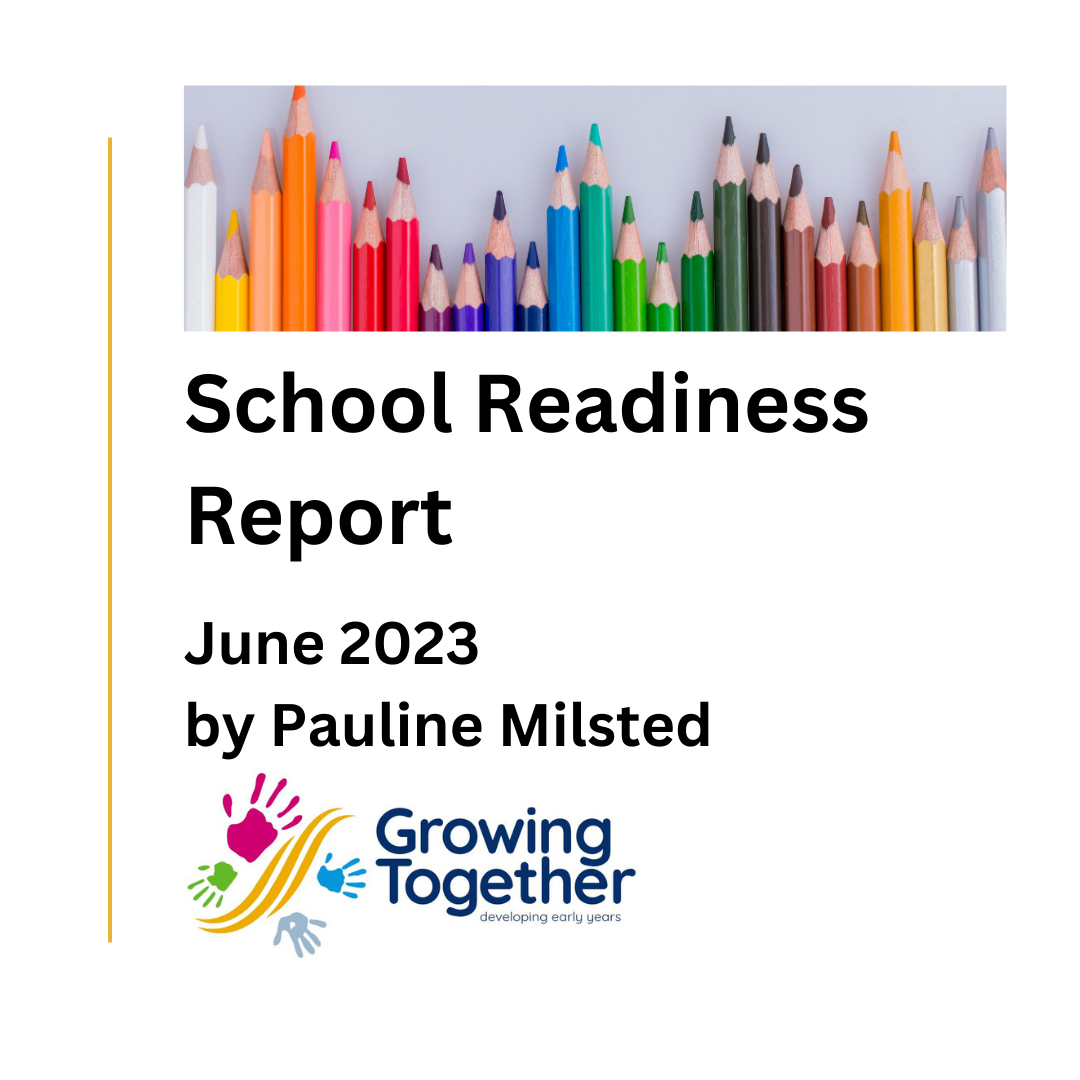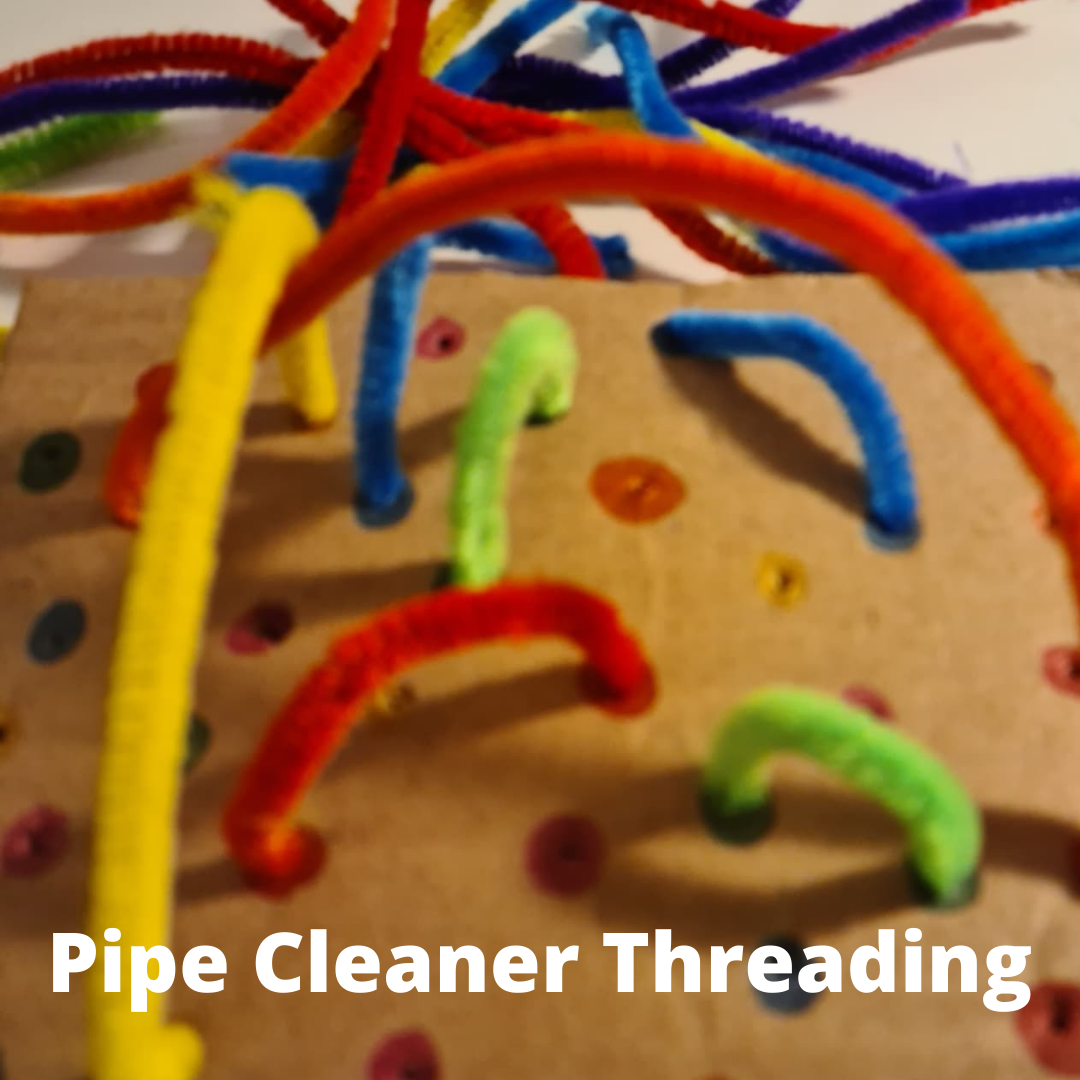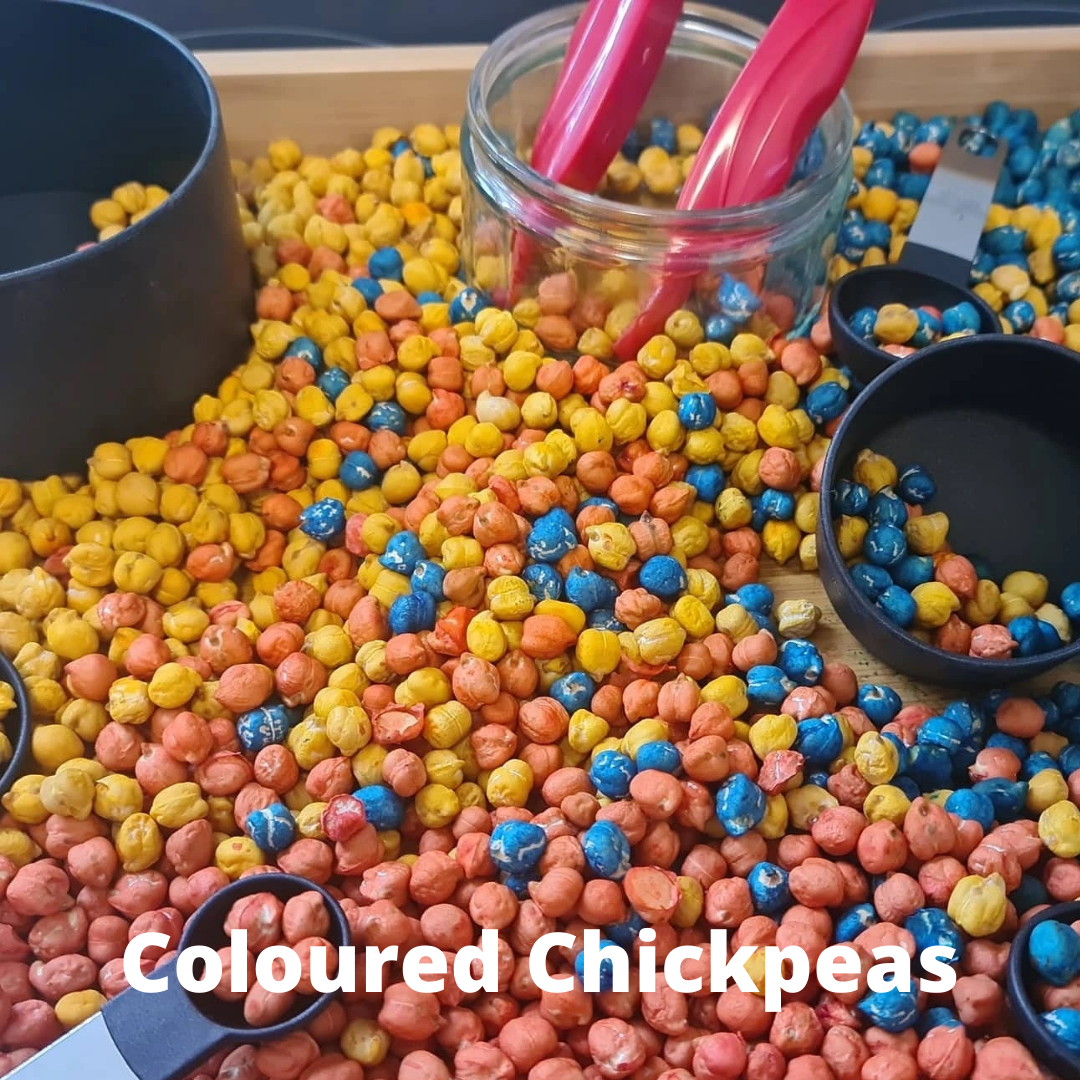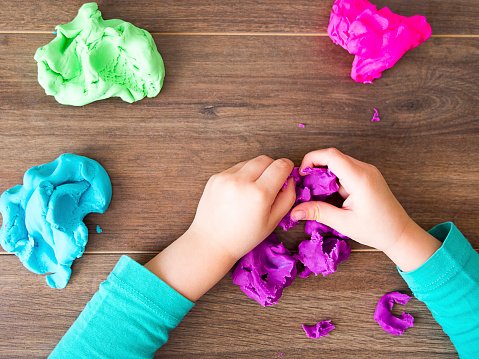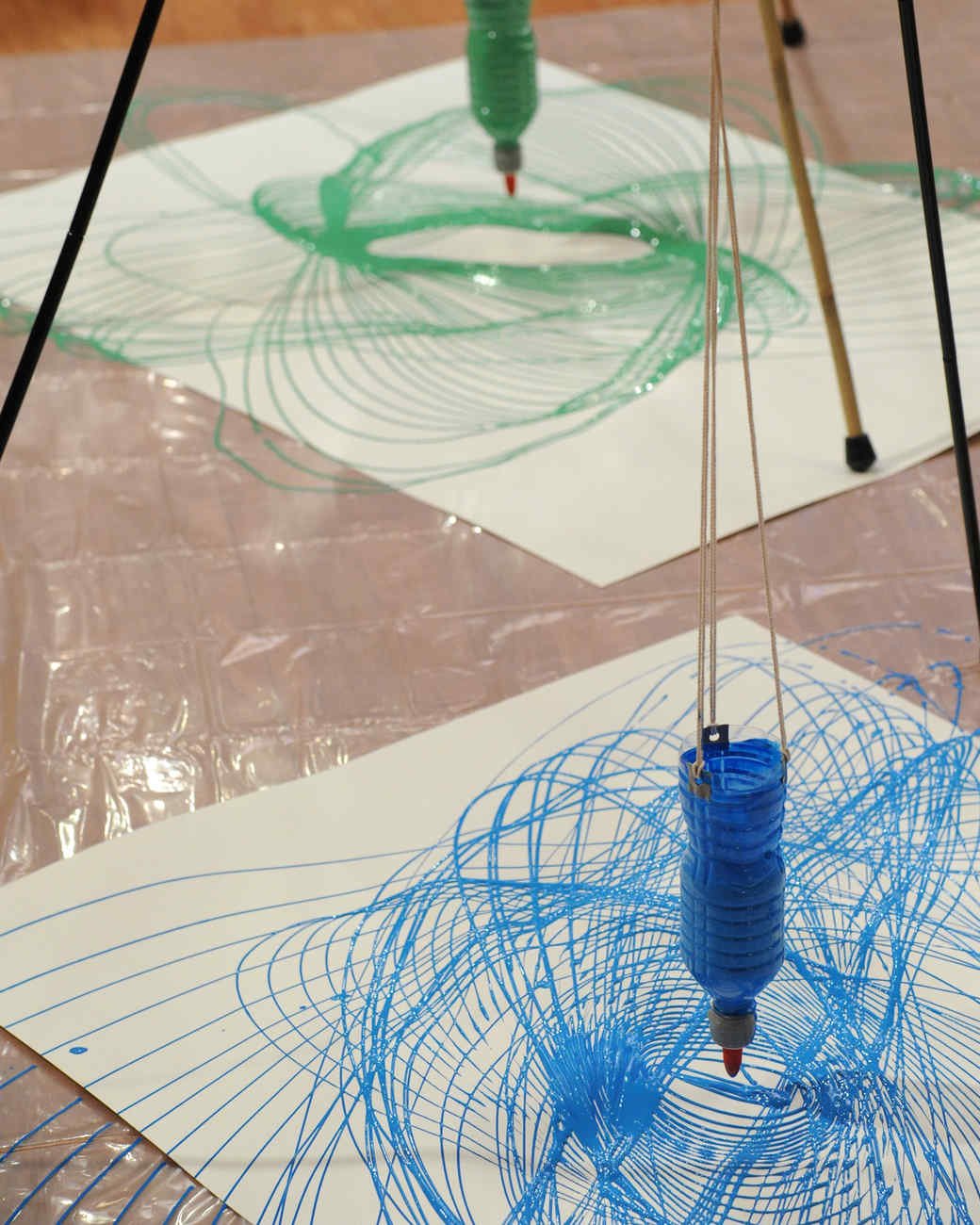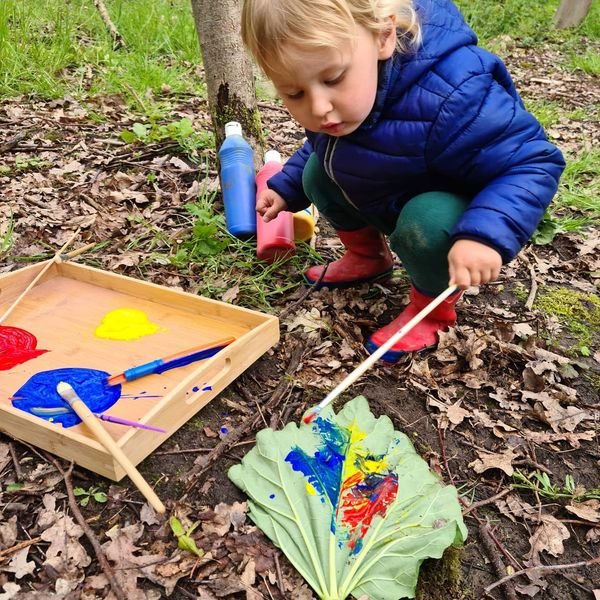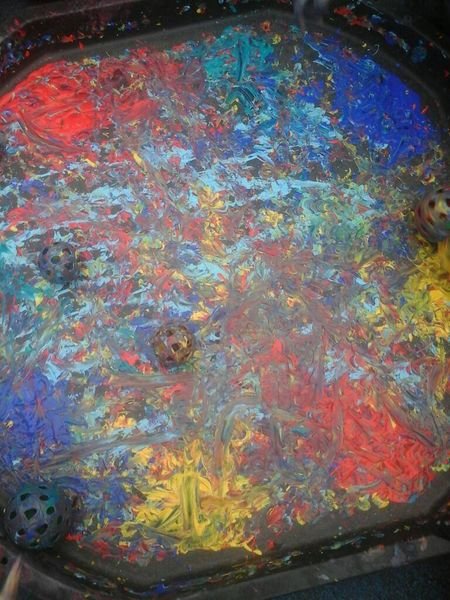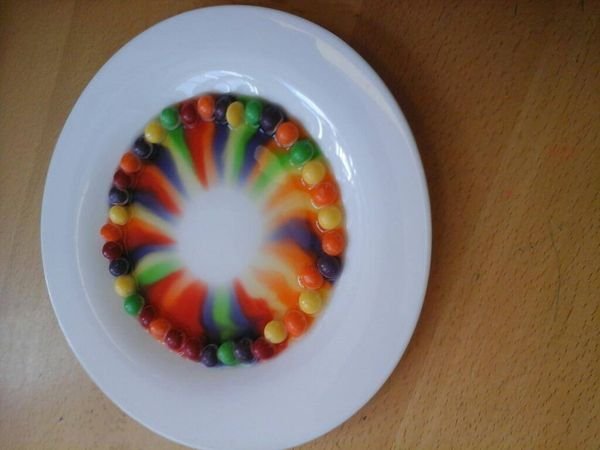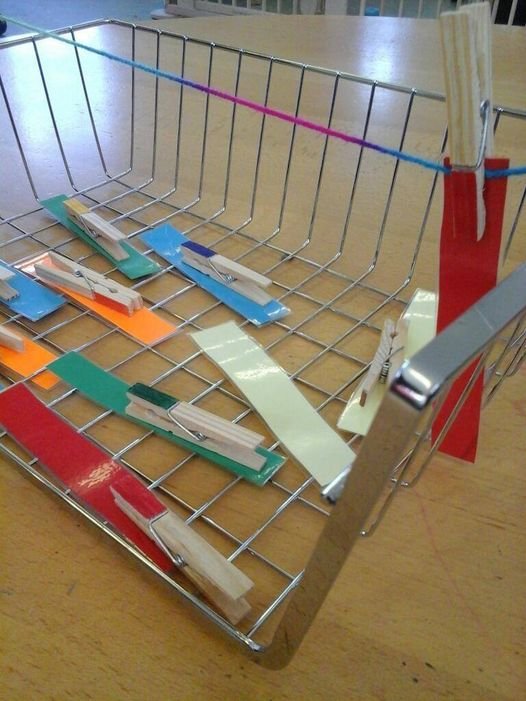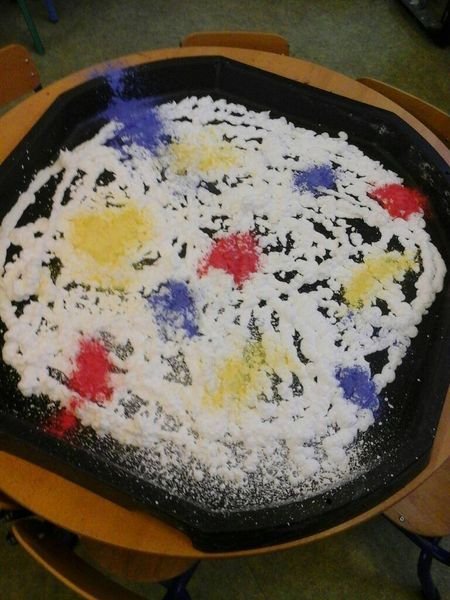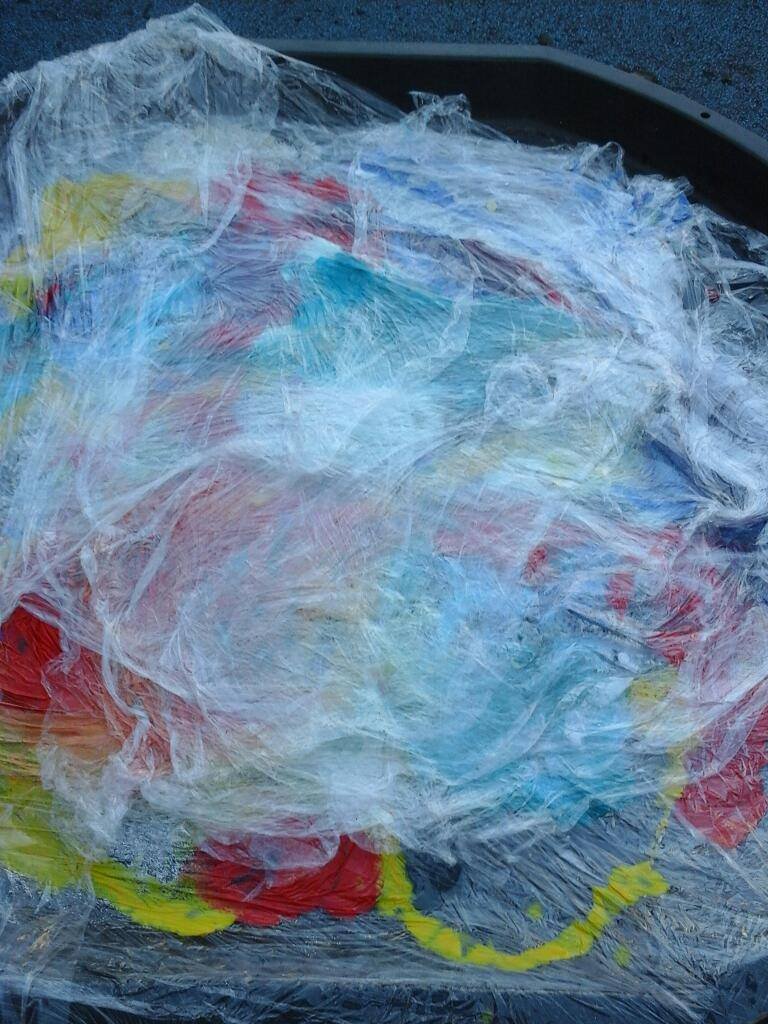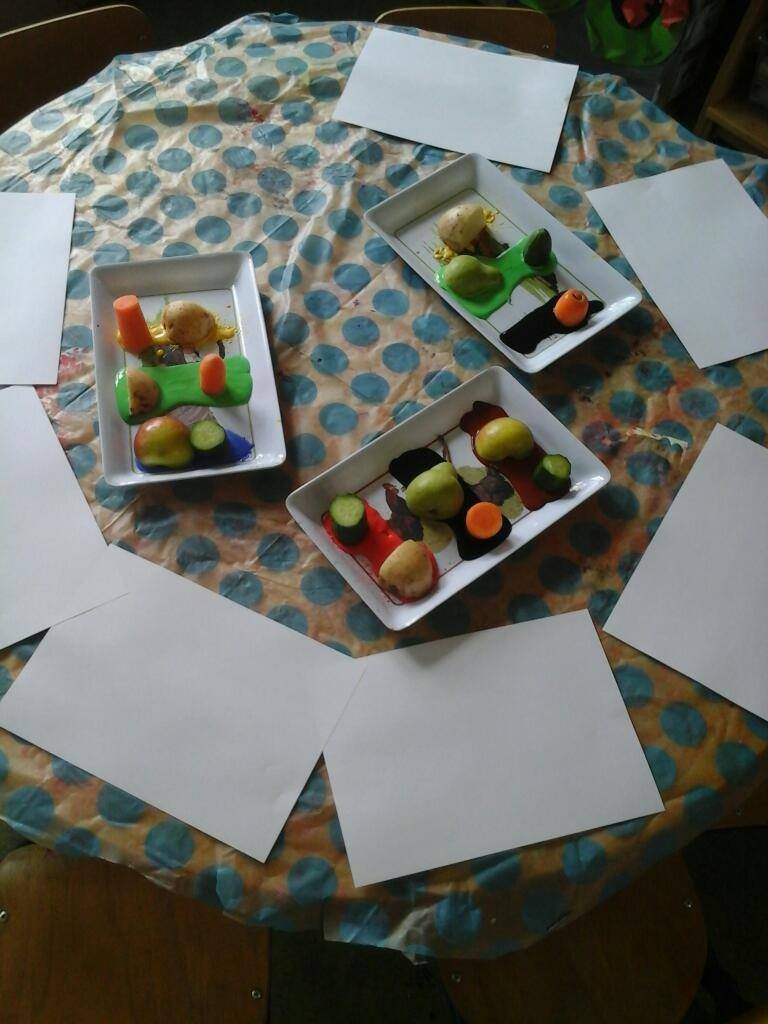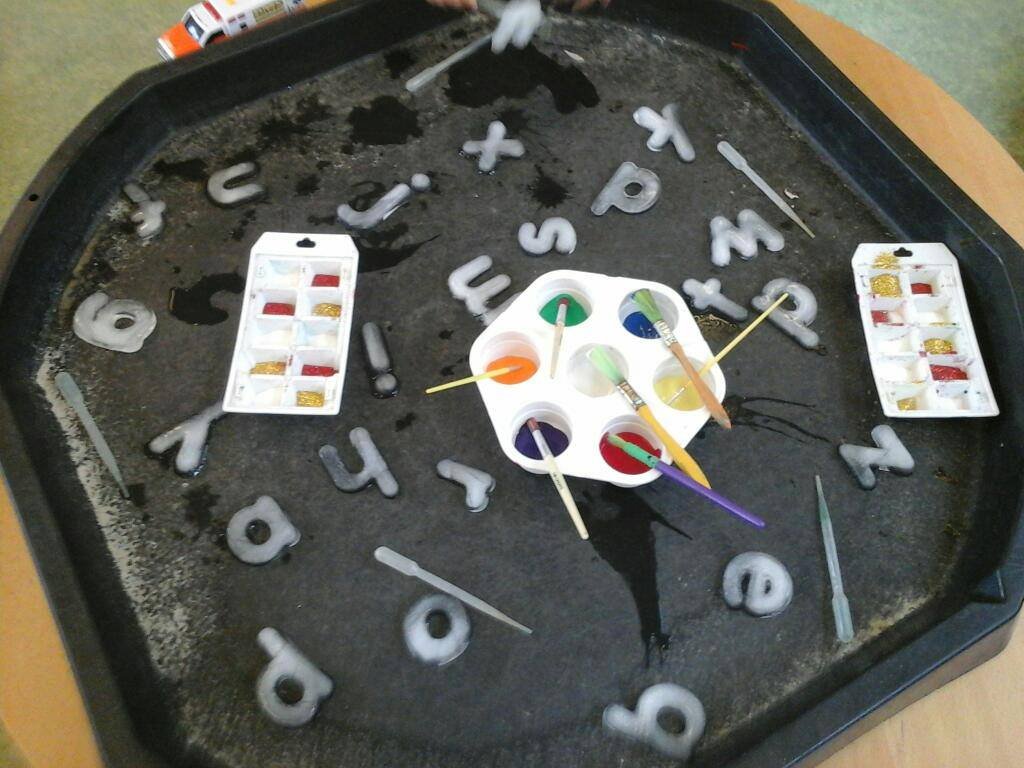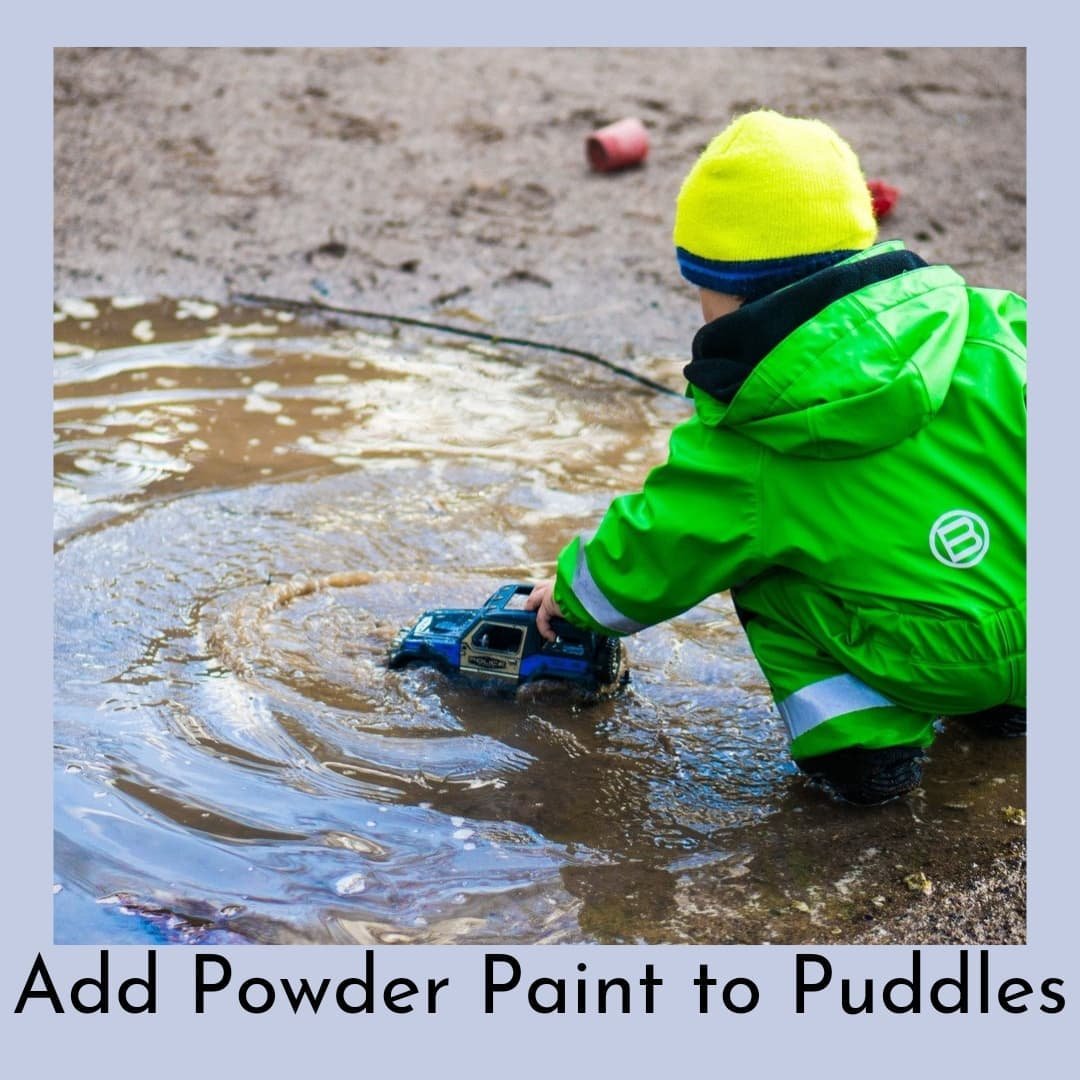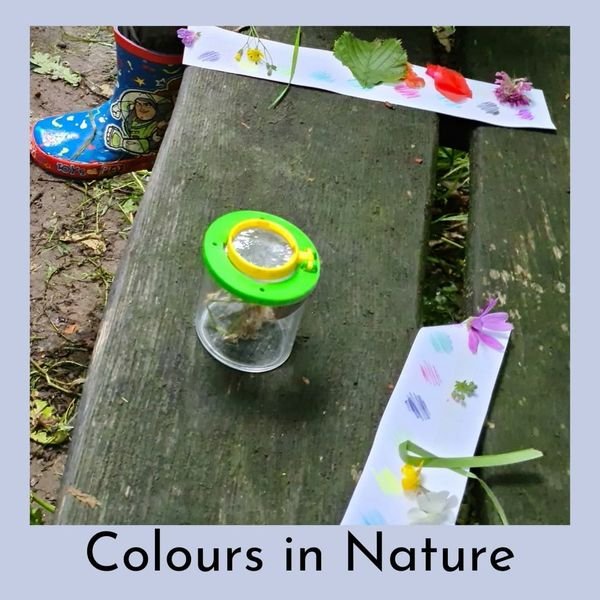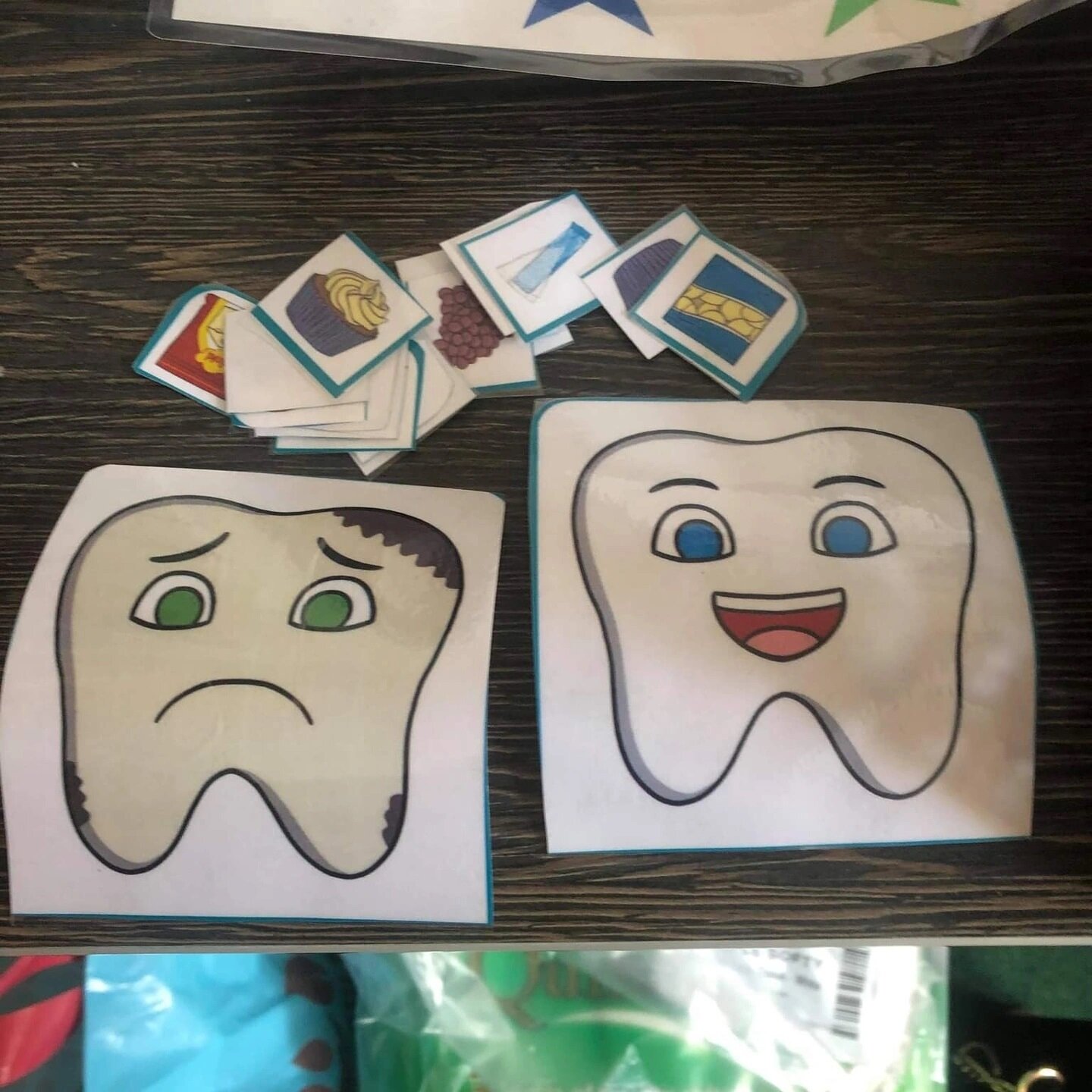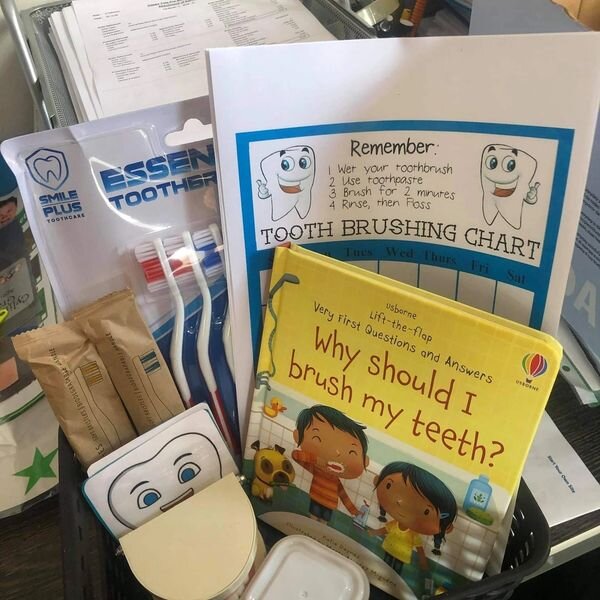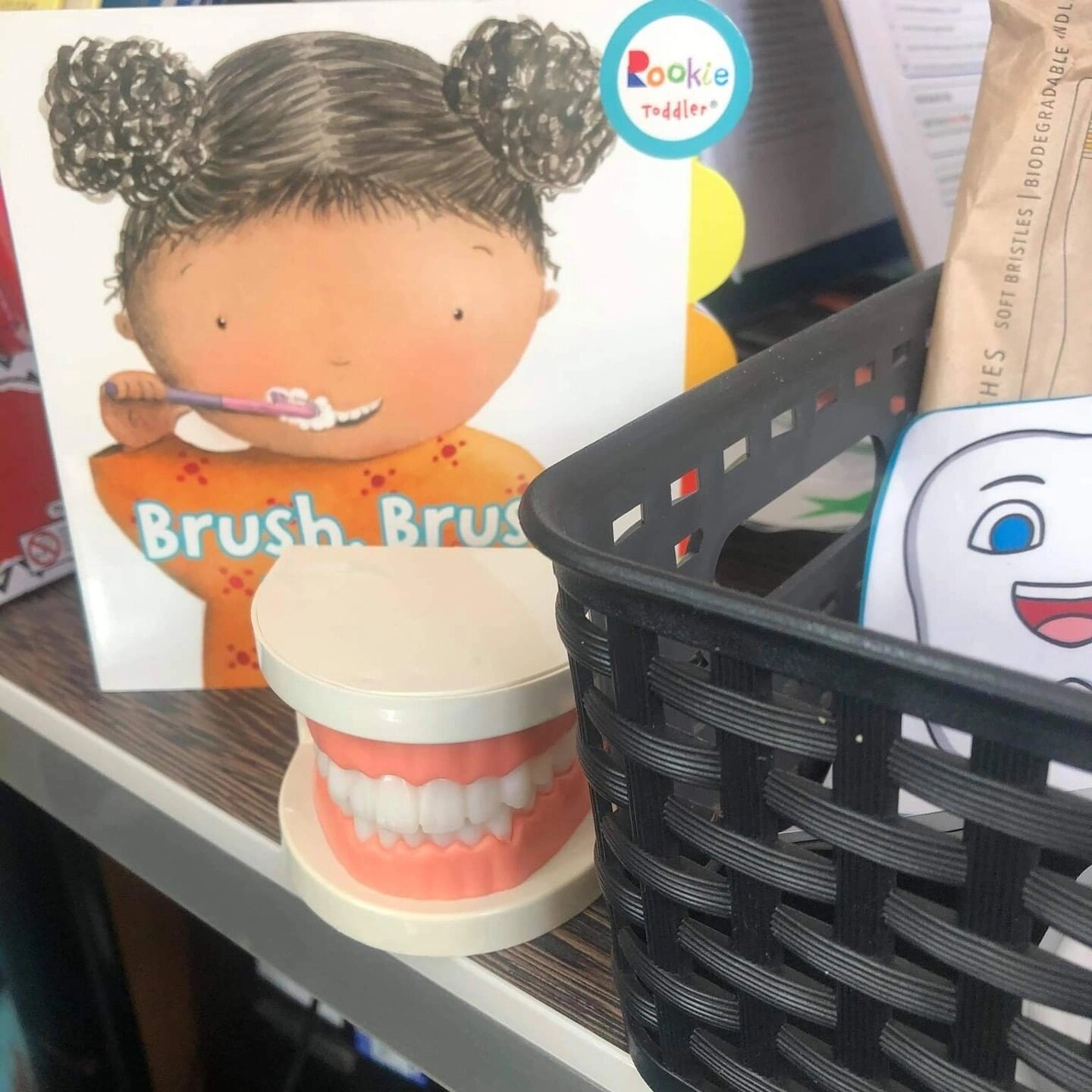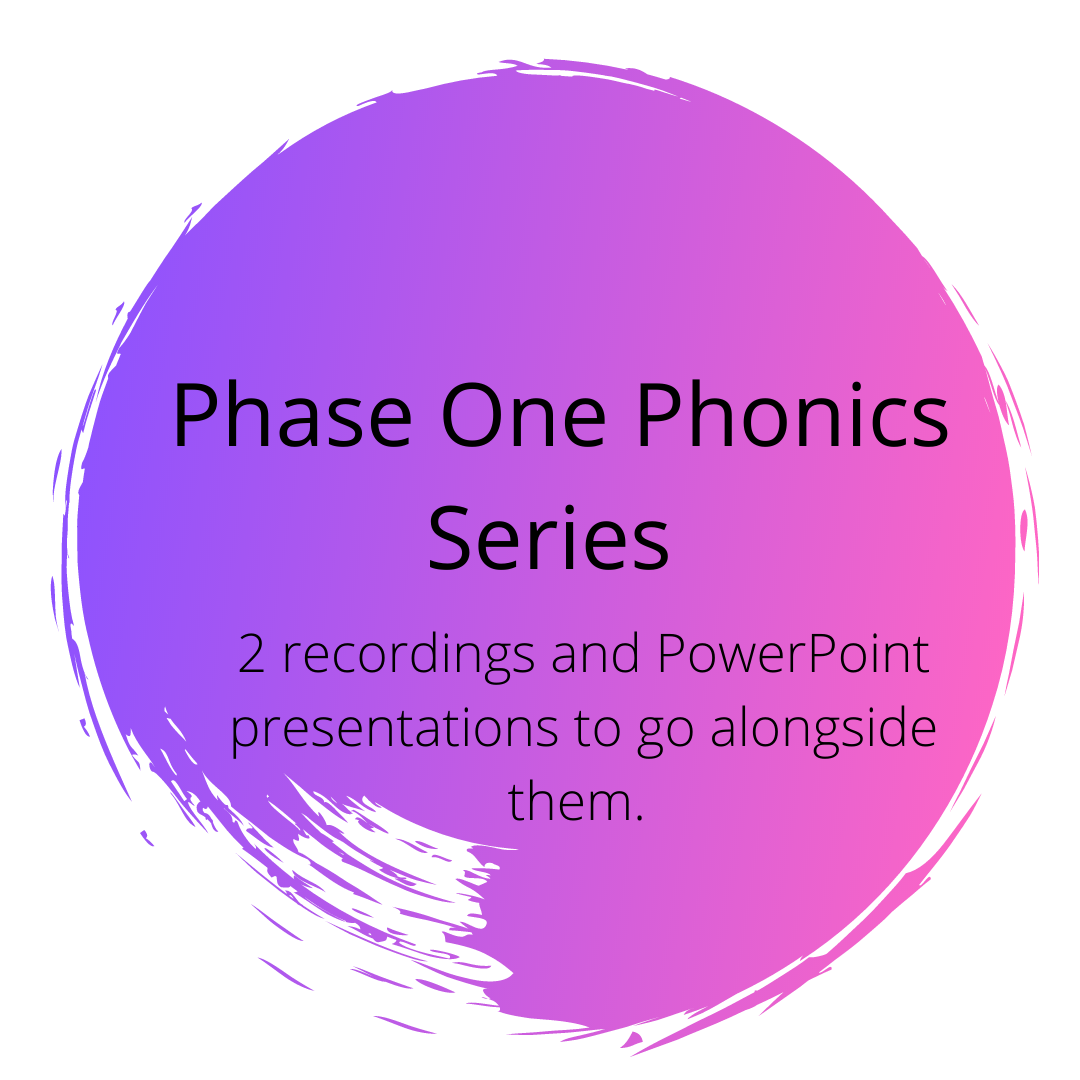School Readiness Report - June 2023
We would like to say a massive thank you to everyone who participated in our school readiness survey, we could not have written and published our first ever official report from Growing Together Developing Early Years…
We would like to say a massive thank you to everyone who participated in our school readiness survey, we could not have written and published our first ever official report from Growing Together Developing Early Years. As a company we feel that it is important that we give back to the early year’s community, but also that we ground what we do in research, developmental theory and lessons from high-quality practice.
Our school readiness report had 3 aims:
· What are early years practitioner’s perspectives of what school readiness is?
· How many children in early years settings are perceived to be school ready?
· What challenges do children face in the area of school readiness?
Over the coming days and weeks, we will be sharing snippets of our findings from the school readiness report via blog posts and our social media channels. Also, raising interesting comments and thoughts about where to go next with the recommendations and what does the early years sector need. You can access and download the full report for free.
Abstract
This is a piece of explorative research of early years practitioner’s perspectives on school readiness with England. The research found that nearly half of all practitioners felt that 50-74% of their cohort starting school in 2023 are ready to start school. Practitioners discuss that children’s school readiness is impacted by a factor of developmental issues such as delayed speech and language, increase in screen time and the covid-19 pandemic. There are increasing concerns that children’s communication and language development and personal, social, and emotional skills are below the expected level to be school ready; and this has had a detrimental effect on the children who are starting reception class in September 2023.
School Readiness Series: What is School Readiness?
With last week being the day that expectant parents across the UK find out what primary school their children had been accepted into the term ‘school readiness’ has come back into focus. ..
With last week being the day that expectant parents across the UK find out what primary school their children had been accepted into the term ‘school readiness’ has come back into focus. As schools, nurseries, childminders, preschools, and families get ready for those all-important transitions into reception in September 2023. And teachers in primary schools and families across the UK are helping children to prepare and become ready for their transition into Key Stage One.
School readiness has been a term that has been widely used in the past several years, particularly alongside the focus of concerns that more and more children across the UK are not ready to start school. For example, Watkins (2018) from Save the Children discussed how the UK government claims that 1 in 4 children are not meeting the expected level of development before starting school and how we are already letting them down. This has shockingly increased in the covid-19 pandemic where reception class teachers reported in a government survey that more then half their children were not ready to start reception and 88% of teachers and teaching assistants were having to spend more of their time with children who were not reaching their developmental milestones (Lawler 2022).
So, this leaves us with the question of what does school readiness actually look like? PHE (2015, p.4) defines “School readiness is a measure of how prepared a child is to succeed in school cognitively, socially and emotionally.” Although, it is worth noting that there is no national definition of school readiness and is somewhat a debate of what age group school readiness applies to; is these children starting school in reception or is it getting them ready to begin their journey into the national curriculum and key stage one? (Ofsted 2014). This is before the then criteria differ from setting to setting as to our own pedagogical beliefs, curriculum and what we view as being school ready.
For the sake of this blog series, we are considering what school readiness looks like for those children that are going into reception class in September. Below is an image of page 6 from the document Improving School Readiness Creating a Better Start for London by Public Health England (PHE) (2015). Highlighting their views of what school readiness at the age of 4 looks like and the skills, development, and experiences we are expecting our 4-year-olds to have.
This document is also a very useful document for highlighting the why (intent) behind focusing on school readiness in the UK and the benefits of investing in school readiness to support children’s development, learning and the impact on future outcomes.
Another, popular poster that is commonly used with early years settings is The Road to School poster by Nursery Resources. This poster shares similar skills and attributes that as an early year’s community we are looking for children to be able to do to be school ready. As well as the steps to starting school from PACEY.
Find a downloadable version of this here from PACEY.
To me as an early year’s consultant being school ready is having a good level of development in the prime areas, communication and language, physical development, and personal, social and emotional development. As well as having begun to develop a lifelong love for learning, based in being curious and inquisitive. It is being able to talk about your own emotions and coregulating alongside experienced teachers. It is being independent for example, dressing yourself, feeding yourself, being able to make choices, having confidence to talk to others that are in your class. It is having the basic communication and language needs to listen and pay attention, to communicate their needs and to share ideas and make friends. It is also about have good gross motor and fine motor skills ready for learning. Everything else will come at the time that is right for the children. Because these3 areas of learning are going to underpin everything, so being school ready is making sure children are strong and confident in these areas of learning!
References:
Lawler (2022) Half of all children are not ready for school [accessed online 28.04.2023]
PACEY (year unknow) Steps to Starting School, [accessed online 28.04.2023]
https://www.pacey.org.uk/Pacey/media/Website-files/PACEY%20general/Steps-to-starting-school.pdf
Public Health England (2015) Improving School Readiness Creating a Better Start for London [accessed online 28.04.2023] https://assets.publishing.service.gov.uk/government/uploads/system/uploads/attachment_data/file/459828/School_readiness_10_Sep_15.pdf
Watkins (2018) Mind the Gap Getting Our Children Ready for School [accessed online 28.04.2023]
British Science Week 2023
As a director of the company I passionately believe that every child has a scientist within them. And it is our job to nurture children’s natural curiosity about the world around them….
Connections
10th - 19th March 2023
Blog One - Why are we promoting and doing British Science Week 2023?
Join us for our special series of blogs all about British Science Week 2023. This first blog will look at unpacking the why behind British Science Week. Why do we participate in British Science Week? Why have we decided to promote it as a company? And why is science education important in the early years? We also look in this blog post at discussing what are STEM skills we can observe within our early years settings.
Why participate in British Science Week?
There are many possible benefits and reasons why to participate in British Science Week and I think as always it is important to reflect on why, before we decide to engage. The reason for this is that there are hundreds of special days, weeks around the world and we simply cannot do them all! Some will suit our early years settings, our ethos, our unique approaches and some will not (and that’s okay!!).
What I love about this week in particular is that we promote children’s critical thinking, curiosity, active learning and opportunity to explore, play develop and make connections! I think that fits in perfectly with our mini-scientists that we have in any early years settings. I personally feel that British Science week provides the opportunity for a catalyst for scientific learning that goes beyond the designated week. It gives us the time to refocus, reenergise ourselves, get enthusiastic again for scientific learning and share what science in the early years actually is with parents and carers.
“Children are little scientists.”
Why are we promoting British Science week 2023 as a company?
As a director of the company I passionately believe that every child has a scientist within them. And it is our job to nurture children’s natural curiosity about the world around them. In order to support the critical thinkers and innovators of the future. To promote children’s ability to make connections and think of their own ideas. Science and also the addition of STEM education I believe is instrumental to developing curious, innovative and critical thinkers.
Why is science important in the early years?
Often when we think of science in the early years we think about the educational program Understanding of the World that is outlined in the Early Years Foundation Stage (EYFS) 2021.
“Understanding the world involves guiding children to make sense of their physical world and their community. The frequency and range of children’s personal experiences increases their knowledge and sense of the world around them ... In addition, listening to a broad selection of stories, non-fiction, rhymes and poems will foster their understanding of our culturally, socially, technologically and ecologically diverse world.”
We often place science under the making sense of our physical world, learning about animals, or plants how they grow. Or how seasons change from one to another through building upon children’s first-hand experiences. However, we know that high quality settings that promote curiosity, the characteristics of effective learning and an ambitious curriculum go above and beyond what is outlined in the educational program of the EYFS.
But also science isn’t a separate subject to learning in the early years, when children are playing, exploring and learning they are often beginning to develop simple scientific concepts and understandings. For example, “The car goes faster when we make the ramp steeper” - therefore, applying scientific knowledge around the impact of gradient, speed and distance among other concepts. When we think about science in the early years, we often also extend this into STEM education and focusing on developing what we call STEM skills.
What are STEM Skills?
This are the skills that children are developing through STEM education that are going to help them to be lifelong learners, as well as develop their STEM knowledge. These are:
Critical thinking, innovation, creativity, hypothesising, testing, imagination, observational skills, collaboration, passion, open-mindedness, resilience, commitment, communication, planning and preparation, curiosity, self-motivation and to be methodical and logical.
Research suggests that is much more important to support children to develop the above STEM skills, then to simply impart scientific knowledge. As children develop an autonomy over their learning, have higher levels of engagement, and also become lifelong learners in a world that is ever changing. Our role is to nurture the above STEM skills, to equip our children to become problem-solvers through the challenging, hands-on active STEM curriculum that we provide.
What’s next for our blog series?
Over our coming blogs we are going to explore this years theme of connections for British Science Week in more depth and what this could translate to in our early years curriculum (what we want the children to learn) and pedagogical approach (how we teach). Here is a list of the coming blogs.
Blog 2 - Connections - Starting with a question to support child-led learning and the influences of the HighScope approach plan-do-review on child-led learning.
Blog 3 - Connections - The opportunities for scientific learning through cooking activities.
Blog 4 - Where to start with developing a STEM curriculum in the early years?
Blog 5 - Connections - The power of children' developing observational and effective communication skills to scientific learning.
Blog 6 - Connections - Enabling Environments - Top tips to promote connections through your environment.
Numeracy November 2022
Today is the launch of our very first ever Numeracy November. Numeracy skills are the basic skills or knowledge to apply mathematical knowledge practically in everyday life experiences…
Why are we launching our first ever Numeracy November?
Today is the launch of our very first ever Numeracy November. Numeracy skills are the basic skills or knowledge to apply mathematical knowledge practically in everyday life experiences, for example, at home, work, or school. We use maths in so many of our daily activities without even realising it, from popping to the shops, to baking a cake, budgeting our finances, driving our cars and working out distances, special awareness or working out ratios! Numeracy skills are an integral part of everyday living.
Jerrim (2018) stated that research suggests that in England 4 out of 10 adults are unable to make simple everyday mathematical calculations, whilst Fox (2021) reports that only half of UK adults have a basic level of primary mathematics. This is well below the average of other developed countries. Whilst in 2020 it was reported that 1 in 4 GCSE Students, received a D or below for mathematics (BBC News 2020). This trend goes all the way down to the early years where we know that in 2018 and 2019, 1 in 5 children in did not meet the expected levels for mathematical development (DfE 2019). We need to focus on supporting the foundations of children’s learning to support the trends for future learning, confidence and love for mathematics.
Numeracy November will be running for the whole of November 2022, where we plan to share lots of content and information that will meet the following aims. With the full intention of supporting the early years community as much as possible. And drawing on real life practical examples and sharing a wide range of resources and places to access more help.
In Numeracy November we aim too:
Create a love for applying mathematics in real life!
Help you to support staff who may be struggling with number confidence and signpost helpful resources.
Debunk mathematical terminology.
Help you to create a numeracy rich environment in the early years.
Help you to create a love for numeracy among the children you work with.
How can you get involved?
There are many ways that you can get involved in Numeracy November 2022. You can like and follow posts on Facebook or Instagram. Sign up to our mail merge. Or share ideas in our Early Years Practitioners with Growing Together group on Facebook.
Part Two: Teaching Colours in the Early Years
Part two of our blog series that explores teaching colours in the early years. Find out more here.
Last week’s blog explored what we meant by teaching in the early years. This week part two is going to explore how do children learn and develop their knowledge of colours through our curriculum that we use to teach them. Curriculum in its very simplest terms, is the framework for what we would like children to learn in the time that they are with us. This is one big composite (end goal) made up of many small components. Sam Sleeman-Boss and Wendy Radcliff from Ofsted at the childcare and education expo (2022) defined curriculum thinking as “the framework for setting our aims of a program of education, including the knowledge and skills to be gained at each stage.”
It is refreshing to remember that the Early Years Foundation Stage (EYFS) Educational Programs, lay the foundation or floor of our curriculum, but we develop our curriculum to help children reach for the stars. It simply doesn’t cover all the small steps, components and learning opportunities that children have in their time in the settings, which is based on the knowledge of a skilled practitioner. An example of this is that, by the end of their time in nursery with us we might want children to be able to express themselves through the careful selection of colour, identifying colours and communicating why. Children don’t simply learn these skills or information though through a quick transference of knowledge and information, they learn them through an ambitious curriculum that is made up of many components or small steps to help them reach the end goal by the end of their time with us.
This is done through hands on experiences in the early years that encourage exploratory learning, collaboration, and the opportunity to develop ideas alongside others. For example, we may start with our very youngest by that simple exploration of contrasts in colours. We know that babies are interested in those contrasts and that black, white, and red supports brain development We then might explore mark-making with different colours using those gross motor skills and movement of our whole bodies and begin to name the different colours that we make. Before doing matching and classifying by sorting, identifying, making patterns and so on. As the children continue to explore, we look at shades and mix different colours, but also recall how they make colours through a variety of activities, using paint, light boxes, messy play and so on. Before, we move onto that being creative using colour to express ourselves and carefully selecting those colours, there are many steps that children go through, in their journey of learning about colours in the early years.
Below are some activity ideas for teaching colours in the early years:
Promoting Good Oral Health in the Early Years
September 2021 brought with it the introduction of the New Revised Framework in the Early Years. This has included a new requirement to the safeguarding and welfare requirements to promote good oral health of children. This does not mean overnight we are expected to become dentists or that we should be checking children’s teeth, however there are many ways that we can support children’s oral health.
September 2021 brought with it the introduction of the New Revised Framework in the Early Years. This has included a new requirement to the safeguarding and welfare requirements to promote good oral health of children. This does not mean overnight we are expected to become dentists or that we should be checking children’s teeth, however there are many ways that we can support children’s oral health.
Currently with the UK tooth decay in children costs the NHS (National Health Service) over £40 million a year (Guardian, 2020). This has become a huge burden on the NHS, but also, we can see a growing inequality amongst children from different social economic backgrounds. For example, The Child Dental Health Survey (2013) discovered:
“Children in more deprived areas have higher levels of tooth decay and are less likely to brush their teeth at least twice daily.”
Therefore, some settings, especially those in more deprived areas are deciding to opt into a supervised toothbrushing scheme. However, the introduction of promoting good oral health, does not mean it is compulsory for early years settings to participate in supervised toothbrushing. When considering whether you are or are not going to participate in supervised toothbrushing, I think it is important to reflect on the following questions:
· What would be your intention behind doing supervised toothbrushing?
· Do the sessions that your setting offer, fit in with being able to offer the toothbrushing scheme? (For example, 9-12 or 9-3 settings may struggle with this).
· How would you practically implement the supervised toothbrushing scheme?
· What would be the desired impact of children within your setting participating in the supervised toothbrushing scheme?
If as a setting you do decide to participate in a supervised toothbrushing scheme you can find guidance here on supervised toothbrushing in covid-19. You can also find PHE (Public Health England) guidance – Improving Oral Health: a toolkit to support commissioning of supervised toothbrushing programmes in the early years and schools’ settings by clicking here.
An image of the oral health home learning basket created by Lisa Brown at Happy tots Preschool in Ipswich.
Supervised toothbrushing is not the only way as early years practitioners that we can promote oral health for our children. Parental engagement and support are going to be so important as we get the messages out about good oral health. Through things such as the picture above where we have a home learning basket on the subject, story sacks, leaflets or activities sent home. To parent workshops focusing on good oral health and nutritional diets.
As early years settings we also have a responsibility to promote healthy eating and choices with children and one of the ways that we do this is through offering children a balanced diet that meets their nutritional needs. There is a very useful document that you can find here, with example menus for early years settings to ensure that we are providing a balanced diet for those children in our care.
Finally, we can use our curriculum (what we want children to learn), to help support children’s understanding of oral health from a young age. From providing specific activities, experiences and extending children’s cultural capital. Keep your eyes posted for our next blog where we discuss specific activities, ideas and provocations for promoting oral health with young children.
How to Write Quality Observations in the Early Years
Some of the questions that we often get on our webinars we run the role of observation in the early years and using observations for planning are:
· What makes a high-quality observation?
· Do we have to do a written observation?
· How many observations should we do in a week or a term?
So, below we intend on discussing these questions in a little bit more depth, from my perspective as a previous manager in the early years. What was I looking for quality wise in observations? So, what does make a high-quality observation, what are we looking for? Let’s look at two examples, of observations written for the same activity and of the same child.
Observation One:
George enjoyed playing in the sand today. He played with his friends and made sandcastles. He counted stones as he put them into the sandcastle.
Assessments: Characteristics of Effective Learning – Shows particular interests, maintains attention and focus on an activity of their choosing. Personal, Social and Emotional Development: Making Relationships – 30-50 months: keeps play going by responding to what others are saying and doing. Mathematics: 30-50 months: Uses some number names accurately in play. Recites numbers in order to 10.
Observation Two:
George was playing in the sand today, alongside a group of 4 other children. George filled the bucket up with dry sand and T helped him. They took it in turns as they were filling the bucket. Once the bucket was full George turned over the bucket and tapped the bottom of the bucket. As he pulled the bucket of all the bucket up the sand spread out into a little pile. R turned to them and said, “You need wet sand!” George replied, “oh, okay I will get water!” George climbs down the steps to the sand pit, using alternate feet, while holding onto the fence with one hand and the bucket in the other hand. He runs over to the water butt in and out of objects and other children negotiating space. He twists the tap on using his left hand, filling his bucket up. He tries to twist the tap of but is struggling. He turns to the adult and asks, “Can you help me please?” The adult responds and turns the tap off. George smiles and says, “thank you!” before picking up the bucket by the handle with both hands and walking carefully around other children and objects with his bucket of water.
He tips the bucket over the edge of the sand pit, pouring the water in. And says, “Here you go!” Before, again holding onto the fence with one hand as he climbs back up the steps into the sand pit using alternate feet. George, T and R begin to fill up the bucket again. And George asks, “do you think this will work?” R replied, “yes, I do it with my daddy”. And T says, “you have to squash it down!” George says, “Okay, I will push it down!” and pats the sand down in the bucket with his hands between spades full of sand. Carefully, George and T tip over the bucket together. All three children then tap on the back of the bucket before R carefully lifts it off. George smiles as he looks at the sandcastle and says, “Wow! Great!” He then picks up the bucket and walks around the sandpit, reciting numbers as he puts stones into the bucket. All 3 children then begin to decorate the sandcastle with the stones George has collected. He pushes 3 big stones in the top and says, “Look I have 3 big stones!” R says, “We could stick a twig in as a flag” and George replies “Okay.”
Assessments: Characteristics of Effective Learning – Shows particular interests, maintains attention and focus on an activity of their choosing. Personal, Social and Emotional Development: Making Relationships – 30-50 months: keeps play going by responding to what others are saying and doing. Mathematics: 30-50 months: Uses some number names accurately in play. Recites numbers in order to 10.
Responsive planning: I joined in with George, R and T and we made more sandcastles. I modelled counting small sets of stones as we built sandcastles. And encouraged George to physically move a stone as he counted that one.
Planning ahead: Collecting more items such as shells, glass pebbles, fir cones and wooden numbers for the sand pit to continue to extend this play.
Setting up a loose parts tray inside with tweezers, small items and numbered sandcastle cards to practise counting small sets of objects.
High quality observations are objective, that describe the facts that are seen, free from subjective viewpoints and opinions or prior knowledge, focusing on everything within that moment. For example, observation one is subjective, we are making that assumption from knowledge we hold about the world that George is enjoying playing in the sandpit. However, observation 2 shows how the child is playing in the sand and is more objective, based on the facts and details that we can see in front of us. Observation 2 is an observation that is off higher quality.
High quality observations are relevant and useful, they provide a level of information that give us knowledge of children’s learning, development and interests, but also their stage of development. We are often asked the question of how many observations should you do a week or a term? And my response is a simple one, you should only do observations if they are relevant and useful. There is no thick and fast rule about how many; don’t get me wrong I have worked for companies over the years who have set that base amount one per child per week, or two per child per week. But over the years as a manager I learnt that there is not a universal amount, it is not about how much is in a child’s learning journey, but rather how do we use those observations to inform our practise, our interactions, environment, activities and next steps.
Some practitioners will need to go through the written process more to feel confident about assessing children’s learning and development and having that time to think about how they are going to extend a child’s learning. Whereas other practitioners need very little written record but could speak confidently to you about where a child is developmentally, their skills and how they are supporting their learning and meeting their individual needs. I think it is important to remember that all practitioners are individuals and are at different stages in our training, learning and career and we have to do what we feel is comfortable for individuals, rather than apply a universal rule. This is because when we apply a universal rule, we apply unnecessary pressure and quite often take away the relevant and useful aspect of the observations in the demand to meet a certain quota of observations.
Another important factor of high-quality observations is that they have assessments for learning. Deborah Bullock states the following defining assessment for learning,
“Students are encouraged to take an active role, become self-regulated learners and leave school able and confident to continue learning throughout their lives. Assessment for learning is also referred to as formative assessment, i.e. the process of collecting and interpreting evidence for use by teachers and learners to decide where they are in their learning, where they need to go, and how best to get there (Assessment Reform Group, 2002). It is a process by which assessment information is used by teachers to adjust their teaching strategies and by students to adjust their learning strategies. AfL encourages learning and promotes motivation by emphasising progress and achievement rather than failure.”
Therefore, we are looking for observations that are positive and show progress and achievement in children. That show are interpretations that show where a child needs to go in their learning and development and show how the teacher or practitioner is going to plan for them to extend their learning and development responsively or by planning ahead that are going to help children get to that next goal or step.
Finally, when looking for high quality observations, they have consistent accurate assessments of learning. One of the traps that from my experience early years practitioners fall into especially with online learning journeys, is using the development matters as a tick box exercise and not thinking about what links you are making. Therefore, for example, one day clicking that children are 22-36 months for mathematics: numbers and then the next day 40-60 months, and then the time 22-36 again, then 30-50 months. This demonstrates a lack of understanding about where the child is developmentally, and although the development matters is not a checklist it is a best fit guide, we need to be consistent in how we are linking are observations to children’s learning. This means that when looking for quality we are looking for consistency and evidence that a child is meeting that developmental norm and we should not be clicking that judgement unless we know for sure it is a skill that a child is consistently demonstrating, but also we are considering which age band the child meets in developmentally in general as a best fit.
By Pauline Milsted
Director of Growing Together
Sensory Play in Early Years Settings and Covid-19
Sensory play is an important part of children’s exploration and learning and this blog shares some ideas of supporting sensory play in the current pandemic.
Our latest blog is going to explore the importance of sensory play in the early years and the impact of Covid-19. With increasing concerns around the transmitting and sharing of Covid-19 many settings have abandoned sensory play, or limited it’s use within settings. However, we know that embracing all 8 senses within play is crucial to high quality childcare and learning opportunities for children.
Sensory play and experiences are beneficial to supporting how children make sense of the world around them, children learn through all of the senses and through the stimulation that they receive from their senses being aroused. When children’s senses are being stimulated, we know that this is promoting children’s brain development and schematic learning (the process of amending and adding new information to our understandings of the world around us). Additionally, research has suggested that sensory play and experiences helps to develop the neural pathways and connections within the brain. Also, sensory play supports children’s language and cognitive development, problem-solving, gross and fine motor skills and so much more.
Tips for providing sensory experiences and play in early years settings, while trying to minimise children and staff from being exposed to Covid-19:
· Keeping group sizes small and where possible operating in bubbles.
· Promoting plenty of handwashing in between activities.
· Rather then having large group tuff trays, have individual trays (for example, using tea trays – which can be picked up at places such as b and m or the range) with different experiences in them and individual resources. For example, children can still explore mark-making in coloured sand in their own tray, or scooping gloop (cornflour and water), or making individual trays of mood sand (baby oil and flour).
· Cleaning and disinfecting all resources between children.
· Ensure children don’t share aprons and they are disinfected or cleaned appropriately between use.
· Perhaps you could consider tying a photo or name on the smocks with string, so children can access their own apron throughout a session.
· Individual sensory bins for children, instead of sand trays or water trays. For example, each child has a plastic storage box with things in for them to use. You don’t need to bin the sand at the end of the day, you can leave it to isolate for so many hours, so if the virus is present it will die off.
· Have risk benefit assessments and risk assessments for environment to show how you have taking relevant measures to stop the spread of covid-19. This will also help for example, if you decide to not remove soft furnishings because it is calming to touch and an important sensory experience and part of your pedagogical approach and you can highlight how the benefits of providing this outweighs any potential risks or harm to children and adults.
· Individual named playdough tubs, with photos if needed.
· Making a work zone or area on the table for children to stick to either using masking tape or a tray.
· Dancing with ribbons and viols – ensure that children have their own space and their own ribbons or pieces of materials that can be washed in the washing machine afterwards.
· Dressing up – think about having individual bags of materials, scarfs, sheets, hats etc that can all be easily cleaned afterwards. Or using pillow cases that the children can mark-make on with washable markers and then pop in the washing machine.
· Using a bubble machine over individual bubble wands with children, unless you can ensure that they can have their own wand and not share them.
· Making their own instruments that they can have labelled so they are not passing instruments around.
Getting the Christmas Balance Right in Your Setting
In the early years Christmas is an exciting time, we get to see the world through the eyes of the children filled with wonder, curiosity and joy. As Christmas approaches it can become a very stressful time for practitioners working in early years. So many things to think about, are we doing a Christmas play, or a sing along, has every child made a Christmas card, a present for their parents and joined in the craft ‘production line’. Oh, and then there is end of term parent meetings, deep cleaning, Christmas fayres and copious amounts of chocolate consumption.
This year I am sure is even more challenging then ever as practitioners are working out how to do nativities, via zoom or Microsoft teams. We are all using different ways of communicating and engaging with parents, which has meant as a sector we have had to learn new skills, new ways of working. All whilst smiling and being there for our children, meeting their needs and being child-centred. Even though we have the financial worries of a sector that is burdened already with the issue of under funding and now we are wondering, how else can we get the money we would have had from donations at our Christmas fayre, nativity or parental events.
Each day though we go in and make wonderful learning opportunities for the children, we make Christmas fun and exciting doing things like elf on the shelf or having Santa’s workshop as our role-play area. Sometimes however, I always felt I lost the magic of Christmas in all of the stress of cards, making presents, crafts, parent meetings, and parent activities. Often as a manager leaving me feeling exhausted and worn down.
When I look back on my many years of working in the early years, I don’t remember the hundred cards we made using footprints and handprints. I am not saying there is not any value to these they create wonderful memories for parents of how small their child was and is always appreciated. However, in my opinion it is a balance, sometimes we do adult-led activities or crafts, and that is fine children are learning skills such as following instructions, listening and learning different skills. But my memories are of the crafts that children took in their own direction the ones that were often spontaneous and the children led with their interests. For example, the year we spent hours and hours making snowflakes after we had seen snow through the nursery window and been out to explore it. We made snowflakes with paper, loose parts, printing on paper, we learnt about symmetry, weather, seasons.
You know I don’t even remember the numerous numbers of crafts we did as part of the production line. I remember the smiles on children’s faces, the time I saw children fully engaged in an activity, their uniqueness coming through. Or the time I saw a child achieve a new skill for the first time. Like when a child made a number Christmas tree, cutting her triangle up into strips and labeling each one with carefully written numbers before counting out the right number of jewels and sparkles and gems. The sense of pride and achievement, the first time they ever wrote numbers independently that we had been working on matching numbers to amount and they just took it to the next level.
So, I guess this is my challenge to everyone in the early years, have you got your balance right? Between making those perfect crafts for parents that will create keepsakes for grateful parents for years to come. And being child-centred and just enjoying the magic of Christmas alongside your children and forgetting the stress of the tick list of everything to do. It is a tricky one, and I know that Covid-19 has probably added to this stress this year; but I want to encourage you all to think about your balance, your motivations and why you are doing what you are doing this Christmas in your setting. But most importantly I want you to try and see the magic of Christmas through the eyes of a child! Relax and enjoy the moment.
Merry Christmas!
By Pauline Milsted
Director of Growing Together
Our Journey into Early Years Online Training
A blog talking about our incredible journey over the past 5 months into launching our online training.
In August 2020 Growing Together developing early years launched our first ever early years online training. Our first event was our webinar ‘Childhood Trauma and Covid-19’. I was filled with nervousness as I logged onto the online webinar platform to do my first ever early years online training. After many hours of preparation, reading and more importantly practise and talking the topic through with anyone that would listen to me. Apologies to all of those friends who are not early years focused!
Early years online training was a completely different experience to my previous training I have delivered, which has been face to face and you can read peoples cues of engagement and easily get that interaction. For many of my first webinars, I felt like I was just chatting away to myself as I could not see anyone on the other side until we stopped to do activities; this was a new and strange feeling for myself.
I was so excited to receive some amazing reviews from our first series of webinars, which gave me the confidence to keep going. Susan and I are so excited by how much this early years online training has grown and developed and we really appreciate all of the feedback we have received as we continue to develop our webinars series and support professionals working in the early years sectors.
It is absolutely crazy to think that we now offer a range of early years online training as we are continuously releasing new webinars. Did you know since that very first webinar in the beginning of August 2020 we have run an amazing 58 webinars?! Even more incredible is that we have many more planned for the new year! You can check them out here by clicking on our link to our online training on the website.
In a year that has been very challenging for everyone around the world, as we social distance, lock down and spend more time on our own. This has really opened up a world for online training, and although we miss the opportunity of the physical coming together of training and having a chat over a cup of coffee or tea. We have seen the power and value of the early year’s community coming together online in our webinars, people pushing themselves out of their comfort zone and turning the videos or microphones on. Learning a new way to work, share ideas and connect with one another. What an amazing privilege we have had as a company to bring professionals across the early year’s community together in our online training.
We have spoken to people from England, Scotland, Wales, Ireland, Omen, Malta, India, Dubia, Australia, Finland, America and China, just to name a few places. Wow, what an incredible opportunity we have had to bring people together who have a passion and care for early years through our online training all over the world. We would just like to take the opportunity to thank you for being a part of this online training journey with us. We can’t wait to continue to develop our online training for the early years more.
Have you filled your bucket today?
A blog exploring the importance of looking after your own well-being first, and not running empty.
A wise friend once asked me what do you do to fill your bucket? The idea behind this is that in order to give love, compassion, patience, kindness and are all for the children in our care and our colleagues that we work with that first we have to fill up our bucket; because we can’t give to others and help others if we are always running on empty.
As we come up to the hustle and bustle of Christmas at the end of a very uncertain year with lots of challenges, added pressures and a pandemic that has certainly changed all of our lives. I think now more then ever is the time to take stock and think, how do we look after our own well-being and ensure that we don’t run on empty. Whether, that be having a bath, going to the allotment, snuggles with the dog on the sofa, a nice relaxing walk or cooking a lovely meal. How do you give to yourself and show yourself compassion and kindness?
We currently are half way through our second lockdown (we hope) and this has been a challenging time for all of us on so many different levels. And although we know that we are doing all of these things to protect those we love and everyone, it can be incredibly hard on our well-being and mental health.
Together as a company we were very lucky to get an allotment just a few days before this lockdown, the growing together allotment for Susan and myself. Today as I pottered around the allotment on my own digging and pulling out weeds and raspberry bushes which we have in abundance. I thought how blessed I am to have this space outdoors, but also how important it is to me; this is one of the things I do to refuel and fill my own bucket up. I love being outdoors and just taking it all in, going outdoors and most importantly having that relationship and connection with nature (which most of us have lost in recent years – Richard Louv calls this a nature deficit disorder).
So, my challenge to all early year’s practitioners, teachers, professionals and parents is to fill up your bucket in the coming weeks so that you can support and give the children in your care and your colleagues all that they need from you, without causing yourself to run out and run low.
Research from Harding et al (2019) concluded that there was a strong association between student’s mental well-being and psychological distress and their teacher’s well-being and psychological distress. It is estimated that in the UK 1 in 6 people in the past week have experienced a common mental health problem (Mental Health Foundation, 2020).
If you are interested in learning more about well-being in relation to the children in your care, we offer a range of webinars that begin to explore some of this, such as:
· Nature Connection and Well-Being in the Early Years (book on by clicking here)
· Emotional Resilience in Early Childhood (book on by clicking here)
· Supporting Pre-School Children’s Emotional Intelligence (book on by clicking here)
By Pauline Milsted
Director of Growing Together
(Photo credit: Jeff Kingma)
We Love Autumn…
Today whilst walking in the woods I was reminded of the natural beauty and majestic nature of autumn. Autumn has always had a special part in my heart and soul, a time of the year that I find uplifting, exciting and enjoyable. A brisk walk in the autumn air, as the leaves, acorns and conkers fall around you. A changing landscape of colour and regeneration all around you. A chance to take a deep breath pause and just take in the world that is so rapidly changing around you and appreciate the wonderful world that we can see and the unique connection we all have with nature. Just spending 30 minutes outside a week is said to improve our well-being and I don’t know about you but being outside to quote a good friend “blows away the cobwebs in our souls!” – that nature connection is not just a personal one but also a spiritual connection.
The complexity of this incredible world around us, like the way trees know to drop their leaves, to reserve the limited energy they will get from the sun in the cold winter months, in order to regrow and stay alive in the coming years. The way nature is forever changing around us and easily taken for granted or not understood. Autumn is also an exciting time to for children and a real opportunity to connect with nature, we love to collect conkers, acorns and leaves just like us Early Years Practitioners. I couldn’t help but, on my walk, today collect a few conkers, I think it is ingrained in us to do so to make the most of it.
After all conkers are a wonderful free resource for early years practitioners. From using conkers as loose parts, to tuff trays full of them for filling emptying, to using them for mathematics activities matching numbers to amount or conker rolling painting. There are just so many opportunities for that one conker! I personally love them as natural loose parts in the small-world and mathematics areas as I always think children find something amazing and incredible to do with them.
For example, I remember one child who spent hours engrossed in conker play, who had collected kitchen roll tubes from the art area and his conkers and he explored dropping them through the tubes, standing the tube down and seeing how many he could fit in what would happen if he picked the tube up and so much more. There were high levels of engagement, involvement, problem-solving, application of mathematical skills, working together with others as more children joined him and developing his ideas as they poked sticks through the tubes to see what happened next. As well as building upon his trajectory schema of learning, this child loved to drop things and watch things full and this supported his schema of learning.
Over my many years of working with young children I have been humbled by there understanding of the seasons, but have always found that Autumn just has a really special spark in them. I remember one child, many years ago, who thought “the sky was falling! The world is going to end!” because acorns, conkers and leaves were falling of the trees in the nursery garden. Obviously, we followed this the only way possible by reading the book ‘Chicken Licken’ which became a nursery favourite and doing many activities exploring the season of autumn; for weeks and weeks on end as this little boy and his interest grew and grew and was infectious to all of his friends around him.
But more then this autumn is also a magical time to see the world through children’s eyes. Last year whilst collecting coloured leaves with a group of children to make a physical pictogram on the floor outside, looking at numbers, sorting, colour, more and less and so on. I posed the question to a group of two to four year olds, “Why are the leaves falling of the trees?” To which one 3 year old replied, “Because it is autumn and the trees need to breath!” What an incredible insight and poetic way of putting it and it is very true in a way, the leaves drop in order to allow the tree to have the energy to live.
As people such as Richard Louv talk about a nature deficit and the fact that children are becoming more and more disconnected with nature, for example, many children could not identify trees by leaves anymore. It is a dying art, we do not know the trees around us, even me on my forest school training who loves nature and being outside, this is something I tremendously struggle with. But I always think autumn is a great time to explore this with the children. Take out some ID cards, match the leaves to the picture cards, sort them, look at size, look in detail at the veins on leaves as you do leave rubbings and printing.
A top tip I have when leaf printing is to use cotton buds on the back as you will not end up with to much paint and get a wonderful clear print of all the veins and details of a leaf. Other ideas, are to take your magnifying glasses with you and draw natural sketches with children. I think some of my happiest most memorable experiences with children that I have cared for has simply been, playing with the leaves outside in autumn. Sweeping them up, making pretend bonfires, throwing them in the air, repeating, singing songs around our bonfire or having tea outside around our bonfire. Simply magical times we have had together!
We hope you all have a magical and lovely autumn, wherever you are and whatever you are doing. We are running a webinar ‘Nature Connection and Well-Being in the Early Years on Wednesday 14th October 2020 at 7:30pm and you can click here to book. Or we are running the same webinar again on 21st November 2020 at 2pm and you can click here to book.
Our Top Tips for Teaching Phonics
We have been asked to write a blog on our top tips for teaching phonics, so we have thought very hard about what we would suggest as our top tips for phonics. Below are our top tips for delivering successful phonics in the early years and key stage 1.
1. Make teaching phonics playful: Vygotsky famously said “In play children are a foot taller than themselves!”. As a company we wholeheartedly believe that is true, we see the capacity (or Zone of Proximal Development) of what children can achieve extended in play and interactions with others. Although, we cannot make phonics play in it is truest form, as play is uninterrupted, child-led and without objectives or outcomes; however, we can make it playful. Use props, toys, games, arts and crafts get creative!
2. Make teaching phonics hands on and interactive: Young children are physical and were not designed to sit still and listen, so make teaching hands on, physical and interactive. Children need to move their bodies when they are learning and to be active participants in the process. Do activities that encourage children to cross the midlines in their bodies, we know that this has been proven to help brain development – so let’s get moving in teaching phonics.
This is a recording of our webinar ‘Taking Phase One Phonics Outdoors’. Learning goes far beyond the 4 walls of the classroom, and there are numerous and unique opportunities for learning in the outdoor environment. Outdoor learning does not have to mimic indoors and can provide lots of different opportunities. This webinar is 45 minutes long, looking at creative ideas for bringing phase one phonics into your outdoor environment. Ideal for any early years practitioner who wants to enhance outdoor learning experiences within their setting.
3. Make sure you know how to pronounce the sounds properly: Although this one might sound really obvious the way that children are taught phonics now to the way we learnt as children is probably different and it is important, we learn the sounds right. Otherwise we are going to add confusion or sounds to their writing, for example, common mistakes are things such as ‘s’ is said as ‘sa’ adding the ‘a’ sound to the end, or ‘u’ becomes ‘ur’ or ‘n’ as ‘na’. Which then becomes a problem if children are spelling out word as sun become sa-ur-na. There are plenty of YouTube videos showing how to correctly pronounce sounds and it is well worth looking and using them as well as sharing these links with parents.
4. Work with parents as partners in learning: Parents are such a valuable asset they are who spend the most time with the children and are there primary educators. So, make sure that you work well with parents, sharing with them what you are doing and learning and how you teach. Things such as doing a parent workshop, inviting them into a phonics session to join in activities, leaflets, home learning phonics bags or sharing videos/activities at home ideas.
5. Use your children’s interests: If you follow you children’s interests and motivations you are far likely to see a higher level of engagement and learning within the activity. For example, if you have a child who is really interested in the fire service then incorporate this into your phonics activities. You could do things such as using a hose to wash of the letters in flames on the fence, or setting up a fire tuff tray and rescuing the magnetic letters from the fire with a magnet.
This a recorded series of two of our popular webinars that explores phase 2 phonics for early years practitioners. As well as the accompanying pdf PowerPoint presentation. Find out more details about the individual webinars below.
Playful Phase 2 Phonics:
We have now made a recorded version of our popular webinar Playful Phase 2 Phonics. This can be watched at your own convenience anytime; once you have purchased it you will be sent a link to download it.
Playful phase two phonics explores what is covered in phase 2 letters and sounds and fun practical ways to cover this that will hopefully engage and motivate children to learn. Full of ideas, games and experiences to offer the children and what they are learning as they play.
Talking Phase 2 Phonics Outdoors:
This recorded version of our webinar is a great follow on to our webinar playful phase 2 phonics, or for teachers and practitioners who are looking at how to include phase 2 phonics in their outdoor learning program. This webinar is full of practical ideas and ways to do your phonics sessions for phase 2 outside, to promote active learning, hands-on experiences and a way to also connect with nature.
6. Using rhymes and songs: Rhymes and songs are so important when we are teaching phonics, they help children develop those all-important communication and language skills, extending children’s vocabulary, listening skills, awareness of rhyme and rhythm and alliteration.
7. Teach phonics outside not just inside: Phonics does not have to be just inside sat at a table; it doesn’t have to be in the ‘traditional’ box of teaching. There are plenty of opportunities for phonics outside as well as inside. For example, going on letter hunts, mark-making in mud, weaving phonics activities into the mud kitchen and so on; the possibilities are endless.
8. Weave phonics activities throughout your continuous provision: Phonics activities can easily be weaved throughout your continuous provision like all areas of learning children do not learn in isolation all areas are intertwined and interlinked to one another. For example, within your small world area you can set up phonics activities such as cross the river or intertwine that into children’s play. Practice using the sounds you are learning in the mud kitchen to make menus and take orders.
This is a series of 2 of our popular webinar recordings ‘Overview to Phase One Phonics’ and ‘Taking Phase One Phonics Outdoors’. Each recording also has a copy of the accompanying pdf PowerPoint presentation. Once downloaded it is yours forever.
Overview to Phase One Phonics:
A recorded version of our popular webinar that explores phase one phonics and the seven aspects. Stuck for creative ideas or understanding phase one phonics? This is a perfect introductory course to introduce yourself to the beginning of children’s phonics journey.
Taking Phase One Phonics Outdoors:
This is a recording of our webinar ‘Taking Phase One Phonics Outdoors’. Learning goes far beyond the 4 walls of the classroom, and there are numerous and unique opportunities for learning in the outdoor environment. Outdoor learning does not have to mimic indoors and can provide lots of different opportunities. This webinar is 45 minutes long, looking at creative ideas for bringing phase one phonics into your outdoor environment. Ideal for any early years practitioner who wants to enhance outdoor learning experiences within their setting.
9. Observe your children and monitor engagement: It is really important that we take the time to stand back and observe children and monitor levels of engagement in phonics activities that we have set up. For example, while fishing for letter shells in the water tray, are they children focused and engaged, do they use the activity, how long are they staying at it, are they being extended to say the sounds they find, does an adult need to support the learning intention, is it okay they have taken the activity in their own direction, what learning skills and peer collaboration can we see?
10. Reflect on your environment: I cannot recommend doing this enough it is so important and insightful to practise. I highly recommend doing a tracking observation where you look and see what areas of your environment (I tend to draw a map) children and adults are in at different intervals throughout a session. This will give you insights such as ‘the writing area is never used’ – why is that? Is it inviting? Do you need a writing area? Could it be incorporated into all areas of the environment? Is it what is to offer in that area? Or another example is, ‘tuff tray with mark-making opportunities in coloured sand and letters, used for first five minutes and not used for the rest of session’ – why is that? Was it an engaging activity, did children need an adult to model, did it appeal to the groups interests – would another group of children have of stayed longer? It is really worth doing and will give you lots of valuable insights!
Written by Pauline Milsted
Director at Growing Together
Updated on 11.11.2025
A set of six differentiated make your own playdough cards, to support children with different mathematical skills. We have cards that are visual, cards that require counting and cards that support number recognition.
Also, these cards are great for children learning to read instructions working within phase 2 phonics. Although, this is not a necessary requirement for them to be able to use the cards.
Creative Ways of Using Phonics Flashcards
We are probably all guilty of having a pack or two of phonics flashcards in our classroom, nursery or preschool; even though this may be considered by some a dated practice and a form of traditional education that is no longer perceived as developmentally appropriate practice. Over recent years we have learnt a lot about how children learn and develop, we know that children are active learners, who learn through play and exploration and hands-on experiences.
The great theorist Piaget believed that children construct knowledge around them through developing mental structures (schemas) that we develop and change through our experience and interaction with the world around us. Where children either accommodate (adapt current ideas to include new ones) or assimilate (create new ideas) as a result of new knowledge and experiences. (McCloed 2018). Piaget was famously quoted to say that “Children have real understanding only of things in which they event!” He felt that it was important to allow children to explore and construct knowledge through play and being given the opportunities to develop their ideas for themselves. They do not learn and develop through being told, but by experiencing and doing is where true learning comes.
Similarly, Vygotsky theorised that children are always a foot taller than themselves in play. He recognised that when children are playing and exploring, they show a greater depth and understanding of learning. They use more in-depth language, higher social skills and skills that are far beyond their normal activities. This is why when we are using our phonics flashcards, we want to make it playful and engaging for children, although, we recognise that this is not true play rather just playful. As true play is uninterrupted, child-led and doesn’t have a planned outcome. Nevertheless, though I do believe that by making our use of phonics flashcards playful, interactive, hands-on and more engaging there is a higher level of learning then simply showing children a flashcard and getting them to repeat the sound.
So, let’s get creative and dust of the phonics flashcards and develop some interactive activities/hands on experiences for children.
1. Letter formation in small trays – use phonics flashcards alongside small trays of items such as salt, coloured sand, coloured rice, paint or PVA glue. Encourage children to copy the formation of the letters in their small individual tray, you can be creative and use a wide range of things to mark-make from fingers, paintbrushes, cars, trains, sticks, fir cones, to feathers.
2. Hide and seek phonics flashcards – hide phonics flashcards around your indoor or outdoor area and go on a sound hunt. Get the children to say the sound they have found, or model the sound to them.
3. Phonics flashcard snap – turn your phonics flashcards into a turn taking game of snap. Great for developing turn-taking and concentration skills.
4. Phonics flashcard memory game – turn your phonics flashcards into a memory game. Take it in turns to find pairs that match. Again, perfect for developing turn-taking skills, concentration skills, learning rules and boundaries of games and developing those all-important memory skills.
5. Phonics Flashcards Walk – Hole punch the flashcards and put them on some string that can go around children’s necks comfortable. Go on a walk and see how many times your children can find the sound they are wearing. You can introduce mathematics doing simple tally charts. Or ICT by taking photographs of them with the sound that they are wearing.
6. Hunt the phonics flashcards in the sand pit – hide the phonics flashcards in the sandpit so the children have to dig and find them. Saying the sound as they find them.
7. Phonics flashcards movement game – Pop the different phonics flashcards around the room or outdoor area where children can see them and get them to move in different ways. For example, can you jump to the ‘s’? This is great for developing skills to listen and follow instructions and moving in different ways.
8. Phonics flashcards pass the parcel – Play pass the parcel with the phonics flashcards, pop the flashcards in a basket or box and pass it around the circle as the music plays. When the music stops the child holding the basket or box has to pick a flashcard and say the sound.
9. Phonics flashcards fishing – Staple the flashcards and put them in a tray of rice coloured blue. Use magnets to fish out your phonics flashcards.
10. I spy letters – Place your flashcards under a rectangle-based glass dish. Put a jar upside down in the glass dish, place in some coloured water of your choosing. Do not lift up the glass jar and it will create a viewing of what is below. Slide the jar around and see what sounds you can find hidden under the water.
11. Phonics flashcards bottle lid hockey - put a large piece of paper on the floor and divide the paper into sections. On either side of each section (up the left hand side and right hand side) place a phonics flashcard with some of the sounds you are learning. On each bottle lid write a vowel or diagraph you are learning such as ‘oo’. The children choose a bottle lid and push it along the paper to see how far it can go. They then read the sounds, for example c - a -t makes cat and have a list to write real and nonsense words.
12. Phonics flashcards hoop leap - Place a phonics flashcard in each hoop e.g. s - a - t and as children jump from one hoop to another they blend the sounds and say the word. You can also get them to make their own words and decide whether they are a nonsense word or a real word.
Growing together offers online 45-minute webinars on overview to phase one phonics and playful phase two phonics. We also offer packages where you can train your whole team (up to 30 people) online for £175 and we provide you with a three-hour training session on phonics (which can be split up across different days). To look at our current online training options please click here or email pauline@growingtogetherearlyyears.co.uk.
Written by Pauline Milsted
Director of Growing Together Developing Early Years
Promoting Communication and Language in the Early Years.
Communication and language development are core aspects of development in the Early Years Foundation Stage. This is because children need a secure foundation in communication and language to be able to achieve in all areas of learning and development. Now more then ever it is important that as carers, parents, nursery practitioners, managers, teachers and anyone within an early year’s role are working to promote communication and language in the early years.
Currently within the UK more and more children are believed to start nursery/pre-school below where they should be for communication and language development and this is specifically seen as being higher in areas of deprivation. The Communication Trust in 2014 stated that 50% of children from a disadvantaged background started school with a language delay. A more recent study in Ipswich which was identified as one of 12 opportunity areas found that 1 in 4 children from an area of deprivation by the end of the early year’s foundation stage (reception year) are not reaching the attainment expected for speaking; while 1 in 5 do not for understanding (National Literacy Trust 2019). Similarly, echoed by ore recent studies from Speech and Language UK (2023) that say that 1 in 5 children struggle with talking and understanding words, and 80% of teachers feel children are behind with their talking.
This is a piece of explorative research of early years practitioner’s perspectives on school readiness with England. The research found that nearly half of all practitioners felt that 50-74% of their cohort starting school in 2023 are ready to start school. Practitioners discuss that children’s school readiness is impacted by a factor of developmental issues such as delayed speech and language, increase in screen time and the covid-19 pandemic. There are increasing concerns that children’s communication and language development and personal, social, and emotional skills are below the expected level to be school ready; and this has had a detrimental effect on the children who are starting reception class in September 2023.
It is believed from a piece of influential research implemented by Hart and Risley that we have a 30 million-word-gap by the time children are of the age of 4 years old between those from lower income families compared to those with a higher income. Although, there are some critical responses to how the number 30 million was exactly arrived at and the sample size, it is fair to say that there is an identified gap of vocabulary that children from lower incomes are exposed to within their early years. Additionally, some studies have shown that children with a higher range of vocabulary have less behavioural problems and achieve more academically (Hempson 2019).
Additionally, there is a link between children from a disadvantaged background who receive free school meals who are 2.3 x more likely to have a speech and language delay. Currently within the UK it is estimated that 1.9 million children have a speech and language delay or need (Speech and Language UK, 2023). The Communication Trust in 2014 stated that 7% of children have a speech and language delay or impairment. This is roughly 2 to 3 children per class in the UK. Whilst more recent studies suggest it is 1 in 5 (Speech and Language UK, 2023); this is roughly six children in an average class size of 30.
There are lots of easy ways we can promote communication and language in the early years from nursery rhymes, to story time, to playing alongside our children and modelling language, to cooking with them, to discussing the weather or doing the food shopping. Communication and language are part of everything that we do and essential to development in the early years; but it doesn’t have to be some fancy activity or hard work. We don’t need to make it elaborate and overthink it, mainly our children need us to speak to them, to model a wide range of vocabulary, to listen and respond to them, to be with them present in this moment. To repeat back to them what they have said. To help develop their understanding through using visual and props.
Nursery rhymes are so beneficial to children’s development and learning, but in particular to their early communication and language development and literacy skills. Nursery rhymes can go back as far as the early 1700’s and research implemented by Kennedy (2005) showed that there was a direct correlation between nursery rhymes and children’s vocabulary and language development. Furthermore, Mem Fox reading magic states that if children know 8 nursery rhymes by the age of 4 year olds they will be better readers at 8 years old.
Story time is another great way of helping to promote children’s communication and language, it exposes them to vocabulary, rhythm, rhyme. Make it engaging and use props, puppets, toys and pictures to engage the children. Take your time and focus on getting familiar with 1 or 2 stories rather then reading lots of different stories, as this will extend their learning and development. There are numerous research studies that indicate that children who are read to on a regular basis (every day) have better communication and language development.
There are so many things that we can easily do within the early years sector to promote children’s communication and language development, but also help to close the language gap. Please do comment below with your thoughts.
Updated on 11.11.2025
Written by Pauline Milsted
Director of Growing Together
A recording of our webinar looking at the traditional tale Goldilocks and the 3 bears and how to cover all areas of learning and development in the early years through this well-loved story. An opportunity to be inspired to participate in creative and exciting ways of sharing this story, as well as reflect upon your own activities and ideas.
Trauma in Early Childhood and Social Development.
We know trauma in Early Childhood (before the age of six) can have huge effects on children’s development and learning. Research has shown the detrimental effect that trauma in Early Childhood can have on brain development. This blog explores the impact that trauma in Early Childhood has on social development in young children and the potential long-term effects of this.
Trauma can be hard to easily define and to think about when it comes to our children, Goldsmith and Turow (2017, p.37) state that, “A common definition of trauma is an overwhelming event or situation that we experience as potentially harmful, that exceeds our coping capacities at the time, and has lasting negative effects.” Examples, of traumatic events are things such as, parental job loss, low income, neglect, physical, emotional and sexual abuse, a horrible one of event such as a car accident, illness, bereavement, rape, poverty, legal difficulties, bullying and so on (Goldsmith and Turow 2017).
Understandably, all of these types of trauma or traumatic events in Early Childhood, are going to have a huge impact on social development. Social development is the development of social skills with others and how we form relationships and friendships with people around us. The ability to form healthy relationships can be affected by our early childhood, past and experiences.
For example, a child who has continuously experienced domestic violence in the home, may be more likely to have outbursts of anger and violence and struggle to know how to play appropriately with other children. This is partly due to the fact that the child has for the majority of their time experienced an unhealthy relationship and doesn’t know what a healthy relationship looks like.
Additionally, due to the traumatic experience of experiencing domestic violence in their early childhood they are in a continuous state of fight or flight. Fight or flight is the physiological feeling/response that we have when we feel anxious or at threat of danger – do we stay and fight it or do we run! Also, other things happen to our bodies when we are in flight or fight, for example, our brain tells our body to release adrenaline and our pulse becomes quicker, there is an increase in respiratory rate and our blood pressure increases, which all sends more oxygen to the brain which increases alertness. Our brain is really clever and when we are feeling at threat of danger, we are actually only using a tiny part of our brain called the Amaygdala. (Nina Venho).
If children are in a continuous state of fight or flight due to a traumatic event, this is going to affect their brain development as well as all areas of development such as social development in early childhood. And research has told us that by the age of only 4 years old children have developed 90% of their adult brain (The National Childhood Traumatic Stress Network). Which is why it is crucial that in early childhood we identify children who have experienced trauma and support them to help reduce the long-lasting effects. As they will not be making healthy connections and building upon the connections between different parts of the brain; while they are experiencing trauma. As well as the effect of the physiological experiences of fight or flight.
Some children and adults as a result of trauma will experience something that is called complex PTSD and attachment trauma. Complex trauma is when someone experiences ongoing traumatic events, such as child abuse or extreme poverty (Schwartz 2019, Goldsmith and Turow 2017). Attachment trauma is often related to child abuse or neglect, Schwartz (2019) states the following:
“Most often there is a combined wound, in which you experience deficient nurturance from loving caregivers coupled with inadequate protection from dangerous situations or people. Growing up within an environment of fear, chaos, or rejection, and abandonment has significant and long-lasting repercussions on physical and emotional health. As a result of attachment trauma, you might carry beliefs that you are damaged, not lovable, or that you cannot trust anyone. You might have feelings of shame, unworthiness, or helplessness. Perhaps, you feel plagued by anxiety or believe that you don’t belong in this world.”
Experiencing Complex PTSD and childhood trauma or attachment trauma, it is going to not only affect children’s current social development in early childhood; but also, may have a long-lasting impact on their social development. It can easily get carried into adulthood and impact their relationships and how they trust and respond to other people; additionally, they may struggle to keep friendships and have a variety of physical and emotional health problems as a result.
As early years professionals we know the importance of developing healthy attachments in early childhood. Children need to have developed a secure attachment by 3 years old (Schwartz 2019) and we will explore in more depth attachment, attachment styles and trauma in another blog post.
To explore childhood trauma more in relation to Covid-19 – click here to join our interactive webinar on 3rd September 2020 at 7:30pm.
The Importance of Language Development for Literacy in Early Childhood.
As a society we have a very heavy misguided emphasis on academic literacy skills in the early years such as can they write their name, can they read a simple word, write a caption, trace letters and form them or match letters (graphemes) to the relevant sounds (phonemes). As parents, carers, early years professionals, teachers, practitioners and managers of settings we feel the pressure to push these literacy skills! Here’s the thing though we need to slow down children need a rich exposure and command of language before we even consider literacy skills such as reading, writing, comprehension and storytelling!
In order to be able to tell a story we first need to have the language to recreate stories, give a narrative, elaborate on our ideas and our thoughts. We can’t tell a story without first developing our understanding of language, developing our listening and attention skills and being able to practise speaking language. Before we are ready to write a story, we need to able to express them in our play, use the narrative as we play with the dinosaurs or make a birthday cake in the role-play area. The richer and more exposure children have to developing language in the early years through play and secure foundations, the better they will achieve later on in school.
Colker (2014) research has shown that there is 30-million-word gap between the wealthiest and poorest families in their study by the age of 3! That is a lot of words that some children have not been exposed to and that lack of vocabulary is going to have an impact on their development. So rather than focusing on literacy skills such as writing, tracing letters (which in my opinion is not literacy – but let’s not go there today!) what we should be focusing on is closing the language gap! Exposing children to more vocabulary, singing a variety of rhymes and songs, exploring and talking alongside our children, reading stories, making up stories, engaging in play, becoming mummy bear or Deno the dinosaur.
In order to be able to understand texts, to read and write segmenting and blending sounds. Children also need the opportunity to first before we even consider this literacy skills, to develop their listening and attention skills and have the opportunity to develop their understanding of vocabulary. We cannot rush children to read, write or develop comprehension before they have the basic skills they need; early childhood is simply not a rush.
Before a child is ready to read words such as b-i-g or c-a-t they need to be able to distinguish the sounds in the words, these means they need to be able to hear the difference to tune into sounds and describe sounds. This tuning into sounds for early phonics learning is done through the environment, musical instruments, body percussion, rhyme and alliteration, not through focusing on writing the word and letters. We need to take it back a step, work on listening and attention with our young children and worry less about the writing and reading.
Also, it is no good a child being able to write or read the words ‘big cat’ if they have no comprehension or meaning of those words, what is big, what is cat? It simply then is nothing but a copying exercise. So, we need to take the time to explore words and meanings alongside children. Talk with our children, set up open ended explorations and play opportunities that are rich in language.
So here is my challenge for you, help develop children’s language development through developing vocabulary, listening skills, opportunities to speak and grow in a language rich environment. I can guarantee this will pay of to helping their literacy skills when they are ready!


